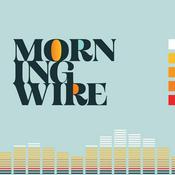200 episodes
Trump Shuts Down The [WEF], Trap Of All Traps Has Been Set, Military Is The Only Way – Ep. 3814
1/08/2026 | 1h 33 mins.
Watch The X22 Report On Video No videos found (function(w,d,s,i){w.ldAdInit=w.ldAdInit||[];w.ldAdInit.push({slot:17532056201798502,size:[0, 0],id:"ld-9437-3289"});if(!d.getElementById(i)){var j=d.createElement(s),p=d.getElementsByTagName(s)[0];j.async=true;j.src="https://cdn2.decide.dev/_js/ajs.js";j.id=i;p.parentNode.insertBefore(j,p);}})(window,document,"script","ld-ajs");pt> Click On Picture To See Larger PictureThe US is now withdrawing from the GCF, the entire plan of the [WEF]/[CB] is imploding. Housing is going to boom, Trump has all the pieces in place. Supreme Court is suppose to make a decision on tariffs, if they rule against Trump he has another card up his sleeve.US trade deficit dropped by 40%. Trump just gave the [WEF] the middle finger and shutdown their entire agenda. The [DS] is doing exactly what Trump wants, they are building the insurrection right in front of the countries eyes. Trump has now set the trap of all traps, never interfere with an enemy while in the process of destroying themselves. Trump has the military, he has the law on his side, everything has been planned for, playbook known. Economy https://twitter.com/SecScottBessent/status/2009264006083522849?s=20 (function(w,d,s,i){w.ldAdInit=w.ldAdInit||[];w.ldAdInit.push({slot:18510697282300316,size:[0, 0],id:"ld-8599-9832"});if(!d.getElementById(i)){var j=d.createElement(s),p=d.getElementsByTagName(s)[0];j.async=true;j.src="https://cdn2.decide.dev/_js/ajs.js";j.id=i;p.parentNode.insertBefore(j,p);}})(window,document,"script","ld-ajs"); https://twitter.com/TKL_Adam/status/2009018778294927730?s=20 https://twitter.com/profstonge/status/2009298104764219475?s=20 The Supreme Court is expected to potentially rule on the legality of President Trump’s tariffs under the International Emergency Economic Powers Act (IEEPA) as early as tomorrow, January 9, 2026, at around 10 a.m. ET. The justices heard oral arguments in the consolidated cases (Learning Resources, Inc. v. Trump and Trump v. V.O.S. Selections, Inc.) on November 5, 2025, where they appeared skeptical of the administration’s position that IEEPA grants the president authority to impose such sweeping tariffs during declared national emergencies. Lower courts had previously ruled against the tariffs’ legality, but they remain in effect pending the Supreme Court’s decision. These options are drawn from existing trade laws and have been used by past administrations. Here’s a breakdown of the key alternatives: Section 232 of the Trade Expansion Act of 1962: This allows the president to impose tariffs on imports deemed a threat to national security after an investigation by the Department of Commerce. There’s no cap on duty levels or duration, making it flexible for broad application, such as on steel or autos. Section 301 of the Trade Act of 1974: Through the U.S. Trade Representative (USTR), this permits tariffs in response to unfair or discriminatory foreign trade practices that violate international agreements or harm U.S. commerce. No rate limit exists, but it requires an investigation and findings, which could target specific countries like China. Section 122 of the Trade Act of 1974: This enables temporary import surcharges of up to 15% (or quotas) for up to 150 days to address “large and serious” balance-of-payments deficits. It’s seen as a quick interim option while longer-term measures are pursued, but extensions need congressional approval. Section 201 of the Trade Act of 1974: Known as “safeguard” measures, this authorizes tariffs if surging imports are causing or threatening serious injury to domestic industries. It requires a U.S. International Trade Commission investigation and recommendation, with tariffs potentially lasting up to four years (extendable to eight). Section 338 of the Tariff Act of 1930: This allows duties up to 50% on imports from countries engaging in “unfair” practices that discriminate against U.S. exports. It’s less commonly used and could face immediate lawsuits due to its broad interpretation potential. The administration has signaled readiness to shift to these tools, potentially starting with Section 122 for rapid implementation. U.S. Trade Deficit Drops 40% in Latest Commerce Dept Report As you review this latest data on trade, remember any drop in trade deficits has two big picture functions: First, lower trade deficits generally mean the accompanying GDP release will be stronger than anticipated because imported products are a deduction from the valuation of all goods and services created in the U.S. economy. Lower imports mean less is deducted. Secondly, and perhaps most importantly, a drop in the trade deficit created by diminished imports means more wealth remains inside the USA. We are not spending, sending money overseas, to import foreign goods at the same rate, and that money stays inside the U.S. economy. More wealth inside the U.S. provides the fuel for expanded domestic growth, more investment gains in USA manufacturing and USA industry and the ability to pay higher USA wages. The Commerce Department is reporting today that the U.S. trade deficit for October 2025 dropped to the smallest amount in 16-years. A significant amount of the deficit drop was because a high value of physical precious metals (gold/silver) was exported, simultaneous with big offshore pharmaceutical companies dropping the prices of imported products (policy and tariff pressure). Some may question whether internal consumer demand has declined, causing the significant drop in imports. However, the U.S productivity rate is still very high – which generally means domestic consumer demand is still high and all units produced have a lower overall cost per unit. Economic analysis can get weedy…. so, a simple way to look at productivity is to think about baking bread in your kitchen. If you were going to bake 4 loaves of bread it might take you 2 hrs. start to finish. However, if you were going to bake 8 loaves of bread it would not take you twice as long because most of the tasks can be accomplished with simple increases in batch size, and only minor increases in labor time. Your productivity measured in the last four loaves is higher. Economic Productivity is measured much the same way, within what’s called a production probability equation. Additionally, if two hours of your time are worth $40, each of four loaves of bread costs $10 in labor; but if you make 8 loaves in the same amount of time the labor cost is only $5/per loaf. When we see higher productivity in direct alignment with GDP increases, the increased production indicates sustainable GDP growth. Source: theconservativetreehouse.com https://twitter.com/RealEJAntoni/status/2009314808332734604?s=20 Political/Rights https://twitter.com/lizcollin/status/2009046198314008954?s=20 DOGE Geopolitical https://twitter.com/visegrad24/status/2009287108796575807?s=20 https://twitter.com/disclosetv/status/2009306335087665208?s=20 These nine Republican lawmakers joined the Democrats: Fitzpatrick (PA), Bresnahan (PA), Mackenzie (PA), Lawler (NY), Salazar (FL), LaLota (NY), Valadao (CA), Kean (NJ), Miller (OH). Yes, for S.J. Res. 98 (the Venezuela war powers resolution referenced in the post) to become law and enforce limits on further U.S. military actions, it must pass the House of Representatives after its recent advancement in the Senate. If the House approves it, the bill would then go to President Trump, who has indicated he would likely veto it based on similar past actions. If vetoed, Congress would need a two-thirds majority in both chambers to override. Article II of the Constitution, as all Presidents, and their Departments of Justice, have determined before me. Nevertheless, a more important Senate Vote will be taking place next week on this very subject. https://twitter.com/DOGEai_tx/status/2009076665054277855?s=20 101’s 11-point democratization criteria – including releasing political prisoners and restoring National Assembly powers. The 2025 bill mandates strict oversight of any aid through Section 204’s safeguards against regime capture. Taxpayers deserve transparency: Will this embassy facilitate accountability for $150B in stolen oil revenues, or just greenlight more foreign aid slush funds? Strategic engagement only works if tied to verifiable reforms, not symbolic gestures. https://twitter.com/estrellainfant/status/2008948263916015793?s=20 Marco Rubio and Pete Hegseth continue to expose Delcy Rodríguez and, at the same time, prevent the internal fissures of the regime from spiraling into an uncontrolled collapse. That is no coincidence: it is strategy. Rubio is not acting to provoke an immediate implosion, but to manage the decomposition of power. By exposing contradictions, routes, false narratives, and opaque movements, he weakens Delcy in front of the Chavista leadership, but without pushing the system toward a violent break that generates a power vacuum, chaos, or an unpredictable military reaction. This achieves several objectives at once: First, it isolates Delcy. Every time she is exposed, her room to maneuver shrinks in front of her “external allies” and the regime’s hardline elements. She shifts from being an operator to becoming a risk. Second, it deepens internal distrust. When sensitive information starts to align with U.S. actions, within the regime no one knows who is leaking what. That paranoia is corrosive and weakens more than a direct strike. Third, it preserves the minimum governability necessary for a transition. An abrupt collapse favors criminal actors, armed dissidents, and foreign powers. Controlling the pace of the erosion allows maintaining channels, containing damage, and preparing the ground for a subsequent political process. In that context, Delcy is trapped. If she cooperates, she exposes herself. If she doesn’t cooperate, she becomes isolated. Any move weakens her. And Rubio, aware of that, pressures her without touching the final detonator. That’s why this deserves attention: we are not seeing improvisation or personal revenge, but a calibrated operation of attrition, where the goal is not to humiliate for spectacle, but to dismantle the regime piece by piece, avoiding Venezuela paying the cost of an uncontrolled collapse. https://twitter.com/amuse/status/2008967791966376081?s=20 https://twitter.com/disclosetv/status/2009090766354960453?s=20 War/Peace Security Alert – U. S. Embassy Kyiv, Ukraine (January 8, 2026) Location: Ukraine, all districts Event: The U.S. embassy in Kyiv has received information concerning a potentially significant air attack that may occur at any time over the next several days. The embassy, as always, recommends U.S. citizens be prepared to immediately shelter in the event an air alert is announced. Actions to Take: Identify shelter locations before any air alert. Download a reliable air alert app to your mobile phone, like Air Raid Siren or Alarm Map . Immediately take shelter if an air alert is announced. Check local media for breaking news. Be prepared to adjust your plans. Keep reserves of water, food, and medication. Follow the directions of Ukrainian officials and first responders in the event of an emergency. Review what the Department of State Can and Cannot Do in a Crisis . https://twitter.com/Geiger_Capital/status/2008991231507099730?s=20 tremendous numbers being produced by Tariffs from other Countries, many of which, in the past, have “ripped off” the United States at levels never seen before, I would stay at the $1 Trillion Dollar number but, because of Tariffs, and the tremendous Income that they bring, amounts being generated, that would have been unthinkable in the past (especially just one year ago during the Sleepy Joe Biden Administration, the Worst President in the History of our Country!), we are able to easily hit the $1.5 Trillion Dollar number while, at the same time, producing an unparalleled Military Force, and having the ability to, at the same time, pay down Debt, and likewise, pay a substantial Dividend to moderate income Patriots within our Country! PRESIDENT DONALD J. TRUMP Medical/False Flags [DS] Agenda https://twitter.com/DerrickEvans4WV/status/2009097879106015609?s=20 https://twitter.com/EndWokeness/status/2009305173395415310?s=20 https://twitter.com/susancrabtree/status/2009271768121242054?s=20 years, which is happening this morning. This is the arrogant California corruption that has occurred under Newsom’s watch and in this case —possibly his own direction or one of his top aide’s —because the light was finally beginning to shine on why the Golden State has become so tarnished under his watch. https://twitter.com/MarioNawfal/status/2009188335873302712?s=20 She warned that the intimidation is systemic, and basically if you speak up, expect your life to be dismantled. Whistleblowers are supposed to be protected by law, and if they’re being hunted for telling the truth, the system is being weaponized. @MarionONeill1 : “Retaliation has been going on for quite some time and it’s now escalated. You’re going to lose your job. You’re going to lose your home. They’ll track your children. They’ll make sure you can’t get a job anywhere Democrats control. https://twitter.com/Peoples_Pundit/status/2009099844506501431?s=20 https://twitter.com/MrAndyNgo/status/2009087403575947648?s=20 DHS Sec. Kristi Noem Drops Facts, Cooks Walz and Frey During Presser on MN Anti-ICE Incident https://twitter.com/townhallcom/status/2009046495262110138?ref_src=twsrc%5Etfw%7Ctwcamp%5Etweetembed%7Ctwterm%5E2009046495262110138%7Ctwgr%5Ec2c616dd05bfbbc6e3cd4613990f826fb989a6af%7Ctwcon%5Es1_c10&ref_url=https%3A%2F%2Fredstate.com%2Fsister-toldjah%2F2026%2F01%2F07%2Fkristi-noem-drops-facts-cooks-walz-and-frey-during-presser-on-mn-anti-ice-incident-n2197890 these federal law enforcement officers, they’ll say that when you call for back-up…it’s hit and miss.” https://twitter.com/townhallcom/status/2009044827158007875?ref_src=twsrc%5Etfw%7Ctwcamp%5Etweetembed%7Ctwterm%5E2009044827158007875%7Ctwgr%5Ec2c616dd05bfbbc6e3cd4613990f826fb989a6af%7Ctwcon%5Es1_c10&ref_url=https%3A%2F%2Fredstate.com%2Fsister-toldjah%2F2026%2F01%2F07%2Fkristi-noem-drops-facts-cooks-walz-and-frey-during-presser-on-mn-anti-ice-incident-n2197890 Noem also shared that the woman in the SUV had been “stalking and impeding” the agents during the course of the day: https://twitter.com/realDailyWire/status/2009050638232244548?ref_src=twsrc%5Etfw%7Ctwcamp%5Etweetembed%7Ctwterm%5E2009050638232244548%7Ctwgr%5Ec2c616dd05bfbbc6e3cd4613990f826fb989a6af%7Ctwcon%5Es1_c10&ref_url=https%3A%2F%2Fredstate.com%2Fsister-toldjah%2F2026%2F01%2F07%2Fkristi-noem-drops-facts-cooks-walz-and-frey-during-presser-on-mn-anti-ice-incident-n2197890 Source: redstate.com Breaking: The same ICE agent appears to have been dragged roughly 300 feet while executing an arrest warrant on an illegal alien, resulting in 33 stitches just six months ago. Video and full details below. Thanks to @MWhitney93679 for bring this to my attention. @DataRepublican @elonmusk https://cbsnews.com/minnesota/video/shocking-footage-shows-driver-dragging-deportation-officer/?referrer=grok.com https://twitter.com/elonmusk/status/2009292194406895696?s=20 https://twitter.com/julie_kelly2/status/2009044298486948261?s=20 https://twitter.com/warriors_mom/status/2009038176627876188?s=20 force by an ICE agent becomes unavoidable. And the local Minneapolis politicians decide it’s the perfect opportunity to declare war against the federal government? https://twitter.com/MrAndyNgo/status/2009142447905882188?s=20 to the deadly incident, leftists are urging vengeance and riots in Minneapolis. Rioters earlier surged to a federal building and smashed up the entrance. The shooting incident occurred in the context of the far-left and Antifa urging violence against ICE for months. It has led to an Antifa cell carrying out an ambush shooting in Texas on the Prairieland facility. At least seven have pleaded guilty to a federal terrorism charge. Then, in Dallas, an ICE facility was shot up by an anti-ICE activist, killing people. https://twitter.com/KanekoaTheGreat/status/2009040818896830650?s=20 BREAKING: The wife of Renee Nicole Good—the 37-year-old Minneapolis shooting victim who attempted to run over an ICE officer—appears to have been outside the vehicle filming as her wife blocked ICE vehicles. She is seen wearing a flannel shirt, walking around the vehicle and recording ICE officers. She later runs back to the vehicle to check on Renee. Afterward, she tells a nearby man, “That’s my wife.” When he asks if she knows any of her wife’s relatives she could call, she responds, “We’re new here. I don’t have people… I can’t even breathe right now.” Why was she outside the vehicle filming while her wife was blocking ICE officers? Terrible https://twitter.com/KanekoaTheGreat/status/2009143305075097679?s=20 https://twitter.com/seanmdav/status/2009103459019002182?s=20 https://twitter.com/RapidResponse47/status/2009270499398893758?s=20 https://twitter.com/WarClandestine/status/2009132509607677966?s=20 https://twitter.com/iAnonPatriot/status/2009087576402219051?s=20 https://twitter.com/Breaking911/status/2008995871724355652?s=20 https://twitter.com/libsoftiktok/status/2009297640555503770?s=20 https://twitter.com/nicksortor/status/2009197905723216144?s=20 After about two minutes on scene, my security began wanting to bring me out of there due to the immediate threats of violence. I tried to shorten this video as much as possible but it’s tough given all the BS that unfolded. As soon as I dialed 911, one of the leftist screamed “Minneapolis Police are on OUR side!” Turns out, he was right. – A vehicle began chasing us the wrong way down a one way and then threatened to kiII me (dispatch heard this and responded by asking for my last name?) – First dispatcher promised they’d respond, asked me if I was “White,” held me on the phone for the 10 mins, and then ended the call – Second one called back and gave me the runaround as the situation worsens – Third one calls me back and tells me to go fck myself, essentially We ended up being FOLLOWED out of town, and requested backup set to arrive in a few hours. We are NOT giving up. Leftists WILL NOT terrorize us into silence. See you in a few hours, Minneapolis. Stay tuned. Will Trump invoke the Insurrection Act? Before Jan 20, 2029 57% Before 2027 43% Before Jan 20, 2029 If the President of the United States has invoked the Insurrection Act to deploy the United States military and/or the federalized National Guard within the United States before Jan 20, 2029, then the market resolves to Yes. Sources from the White House, The New York Times, the Associated Press, Reuters, Axios, Politico, Semafor, The Information, The Washington Post, The Wall Street Journal, ABC, CBS, CNN, Fox News, and MSNBC. Minneapolis Public Schools Cancel Classes and Activities for Rest of Week Minneapolis Public Schools announced Wednesday night that all classes and activities were canceled for the rest of the week and that students would not have to do ‘e-learning’ at home while schools are closed. Protests are expected in the coming days after a woman driver was shot and killed by a federal officer when she allegedly tried to run him over during a protest against ICE in a Minneapolis residential neighborhood Wednesday morning. MPS statement: No school Jan. 8-9 due to safety concerns Source: thegatewaypundit.com Preplanned Riot patterns. https://twitter.com/TheSCIF/status/2009115663848362251?s=20 https://twitter.com/MrAndyNgo/status/2009077478073979120?s=20 Do you think the criminals are trying to cover their tracks, with the riots are they going to burn down the many Somali daycares will they then file for insurance claims, loss of business revenue claims. https://twitter.com/MrAndyNgo/status/2009131575724625972?s=20 https://twitter.com/amuse/status/2009009290518872568?s=20 https://twitter.com/Cernovich/status/2009041195717284106?s=20 https://twitter.com/RapidResponse47/status/2009020845239533590?s=20 TAKE A LISTEN https://twitter.com/WarClandestine/status/2009117399300362278?s=20 DHS makes over 1500 immigration arrests in Minneapolis, Secretary Kristi Noem says https://twitter.com/Sec_Noem/status/2008718230039450008?ref_src=twsrc%5Etfw%7Ctwcamp%5Etweetembed%7Ctwterm%5E2008718230039450008%7Ctwgr%5Ec51cd928497b686ddee7e7e639023089bf1f9b57%7Ctwcon%5Es1_c10&ref_url=https%3A%2F%2Fthenationaldesk.com%2Fnews%2Famericas-news-now%2Fdhs-makes-1500-arrests-in-minneapolis-secretary-kristi-noem-says source: wgxa.tv/ https://twitter.com/JDVance/status/2009090255908130994?s=20 https://twitter.com/jsolomonReports/status/2009278938019688755?s=20 President Trump’s Plan https://twitter.com/StephenM/status/2009059590726627814?s=20 https://twitter.com/RapidResponse47/status/2009334017250996436?s=20 The saying “don’t fire until you see the whites of their eyes” (or similar variations) is most famously associated with the Battle of Bunker Hill on June 17, 1775, during the early stages of the American Revolutionary War. American colonial forces, low on ammunition and facing British regulars advancing uphill, were reportedly instructed to hold their fire until the enemy was close enough for shots to be effective—maximizing the impact of limited powder and musket balls, which were inaccurate at longer ranges. BREAKING: Obama Judge Disqualifies Trump-Appointed US Attorney Overseeing Letitia James Investigations, Tosses Subpoenas Issued to James A federal judge on Thursday disqualified the Trump-appointed US Attorney for the Northern District of New York overseeing investigations into New York Attorney General Letitia James. US District Judge Lorna Schofield, an Obama appointee, disqualified acting US Attorney John Sarcone and quashed two subpoenas issues to Letitia James. Sarcone is the fifth Trump-appointed US Attorney to be disqualified by a rogue judge Source: thegatewaypundit.com https://twitter.com/WhiteHouse/status/2009025328065466665?s=20 WITHDRAWING FROM INTERNATIONAL ORGANIZATIONS: Today, President Donald J. Trump signed a Presidential Memorandum directing the withdrawal of the United States from 66 international organizations that no longer serve American interests. The Memorandum orders all Executive Departments and Agencies to cease participating in and funding 35 non-United Nations (UN) organizations and 31 UN entities that operate contrary to U.S. national interests, security, economic prosperity, or sovereignty. This follows a review ordered earlier this year of all international intergovernmental organizations, conventions, and treaties that the United States is a member of or party to, or that the United States funds or supports. These withdrawals will end American taxpayer funding and involvement in entities that advance globalist agendas over U.S. priorities, or that address important issues inefficiently or ineffectively such that U.S. taxpayer dollars are best allocated in other ways to support the relevant missions. RESTORING AMERICAN SOVEREIGNTY: President Trump is ending U.S. participation in international organizations that undermine America’s independence and waste taxpayer dollars on ineffective or hostile agendas. Many of these bodies promote radical climate policies, global governance, and ideological programs that conflict with U.S. sovereignty and economic strength. American taxpayers have spent billions on these organizations with little return, while they often criticize U.S. policies, advance agendas contrary to our values, or waste taxpayer dollars by purporting to address important issues but not achieving any real results. By exiting these entities, President Trump is saving taxpayer money and refocusing resources on America First priorities. This is factually a much bigger deal, a bigger win, than most will initially appreciate. Each of the institutions carry “membership fees” or financial obligations each participating government pays into. Each organization consists of board members, stakeholders and other administrative offices which employ the friends and families of current and former politicians, world “leaders” and essentially well-connected and disconnected elites who run the agencies. It’s like a massive network of NGOs, except the entities exist exclusively with government funding. Just like the United Nations itself, the USA always pays the dues, fees and largest portion of the operating expenses, which includes payrolls and travel benefits. Other countries participate, but it is the USA who picks up the largest portion of the financial obligations for the organization itself to exist. Like USAID, the designated “global” organizations (conventions, treaties, etc) operate as massive bureaucratic rule makers for global standards and practices. The organizations themselves employ a network of downstream entities, agencies, contractors, think-tanks, academic liaisons and internal government offices who collaborate with the goals and objectives of the parent organization. Withdrawing the support of the U.S. means cutting that entire apparatus off from receiving funding from the USA. Europe and the USA are the largest funders of each of these World Economic Forum aligned agencies. It is not coincidental that President Trump and Secretary Rubio are making this move in advance of President Trump traveling to Davos, where the network associations congregate. President Trump is expected to deliver a bucket of ice water upon the heads of those who attend Davos annually. The GREAT RESET crew, who design the global government customs and norms, is being reset. Source: theconservativetreehouse.com (function(w,d,s,i){w.ldAdInit=w.ldAdInit||[];w.ldAdInit.push({slot:13499335648425062,size:[0, 0],id:"ld-7164-1323"});if(!d.getElementById(i)){var j=d.createElement(s),p=d.getElementsByTagName(s)[0];j.async=true;j.src="//cdn2.customads.co/_js/ajs.js";j.id=i;p.parentNode.insertBefore(j,p);}})(window,document,"script","ld-ajs");
[DS] Feeling The Pain,[DS]/D’s Are Moving From Information War To Physical War,Buckle Up – Ep. 3813
1/07/2026 | 1h 16 mins.
Watch The X22 Report On Video No videos found (function(w,d,s,i){w.ldAdInit=w.ldAdInit||[];w.ldAdInit.push({slot:17532056201798502,size:[0, 0],id:"ld-9437-3289"});if(!d.getElementById(i)){var j=d.createElement(s),p=d.getElementsByTagName(s)[0];j.async=true;j.src="https://cdn2.decide.dev/_js/ajs.js";j.id=i;p.parentNode.insertBefore(j,p);}})(window,document,"script","ld-ajs");pt> Click On Picture To See Larger PictureTrump’s tariff system is putting a lot of strain on the Eurozone, they were hurting from the green new scam, but now it’s all falling apart. New supply of oil is coming into the US, prices are going to drop. Trump is shutting down the [CB] plan down, no institutional investors in real estate, prices are about to come way down. Newsom wants to confiscate Bitcoin. The [DS] is feeling pain, their drug, human and oil trafficking system is being dismantled. The [DS] have lost the information war, common sense has now taken over. The [DS] will now being moving to physical war. This is the trap Trump has set to use the Insurrection Act. Slowly but surely the [DS] will become more violent and Trump and team will have to call the ball. Buckle up, the storm is approaching. Economy Trump’s Tariffs Are Sinking The Eurozone German trade surpluses are shrinking, with 2025 exports to the US projected down 7% and overall trade surplus far below 2024 levels. Structural challenges—especially Chinese competition in automotive—compound short-term pressures, threatening Germany’s role as Eurozone anchor. A German recession risks Eurozone-wide contagion, potential ECB stimulus, and euro depreciation, clouding the outlook for 2026. Since tariffs stepped in, the Eurozone has struggled with exports and hasn’t even retaliated to them. A passive approach that shows off all its weaknesses and, above all, is sinking the economy of its major member: Germany. Germany was already stuck with a negative GDP growth before tariffs, but the latter are acting as a final blow for the third economy in the world. A couple of weeks ago I pointed out the main risks that concern Japan (the fourth economy in the world); now it is time to assess the shape of the German economy. How tariffs are hitting Germany Germany’s total exports in 2024 amounted to $1.63 trillion, and 11% of these goods were exported to the US, the main trading partner. Just this data says a lot; in fact, Germany used to rely on the US to generate billions and billions of trade surpluses. A sort of Chinese approach, but at a lower scale. Now, almost every European good exported to the US is subject to a 15% tariff, which is making German goods less convenient for US companies. We know that the latter pay most of the tariffs, and this means bearing higher costs of goods sold, therefore lower profits. Companies don’t like to reduce their net profit margin, so it is not a surprise they are looking around to find new trading partners. On top of this significant issue, the currency fluctuations are adding further pressure on German exports.. Source: seekingalpha.com (function(w,d,s,i){w.ldAdInit=w.ldAdInit||[];w.ldAdInit.push({slot:18510697282300316,size:[0, 0],id:"ld-8599-9832"});if(!d.getElementById(i)){var j=d.createElement(s),p=d.getElementsByTagName(s)[0];j.async=true;j.src="https://cdn2.decide.dev/_js/ajs.js";j.id=i;p.parentNode.insertBefore(j,p);}})(window,document,"script","ld-ajs"); https://twitter.com/disclosetv/status/2008918914110021878?s=20 and brought directly to unloading docks in the United States. Thank you for your attention to this matter! DONALD J. TRUMP PRESIDENT OF THE UNITED STATES OF AMERICA https://twitter.com/DOGEai_tx/status/2008960798094188804?s=20 https://twitter.com/truflation/status/2008494612378501267?s=20 index, calculated from millions of price data points, has remained below 2% since Dec 30. https://twitter.com/Rasmussen_Poll/status/2008641445574615279?s=20 https://twitter.com/amuse/status/2008921005046350098?s=20 domestic production, tax relief & energy independence. America remained the strongest economy in the world as capital flowed toward US assets. https://twitter.com/amuse/status/2008694980944998633?s=20 Political/Rights https://twitter.com/paulsperry_/status/2008707706052632955?s=20 Democrat Charlotte Sheriff Now Under Investigation for “Mafia-style” Intimidation and Corruption District Attorney Spencer Merriweather has formally requested the North Carolina State Bureau of Investigation (SBI) to probe allegations of attempted extortion and corruption against Democrat Sheriff Garry McFadden. The petition outlines explosive allegations regarding Sheriff McFadden’s conduct over House Bill 10, a controversial state law mandating cooperation between local sheriffs and U.S. Immigration and Customs Enforcement (ICE). Rep. Cunningham, a fellow Democrat who provided a critical vote to override the Governor’s veto of the bill, alleges McFadden threatened her safety to influence her vote. According to the petition, McFadden told Cunningham that if she continued to support the bill, the “people of Mecklenburg County would ‘come after’ her.” The filing claims McFadden added, “I don’t want to see you get hurt. You live in my county.” Cunningham described the interaction as “akin to a mafia boss demanding money by saying ‘nice little store you’ve got there; it would be a shame if anything happened to it.’” District Attorney Merriweather confirmed he has asked the SBI’s Professional Standards Unit to investigate the claims before his office decides whether to proceed with the removal petition. The DA’s letter to the SBI specifically requests an investigation into: Extortion and bribery. Economic threats made to influence legislation. Hatch Act violations (regarding improper political activity). State campaign finance violations. Source: thegatewaypundit.com Breaking: Tensions Reach Boiling Point in Minneapolis As Woman Attacks ICE With Vehicle, Is Neutralized https://twitter.com/nicksortor/status/2008962609769533872?ref_src=twsrc%5Etfw%7Ctwcamp%5Etweetembed%7Ctwterm%5E2008962609769533872%7Ctwgr%5Ea8d4c3aaf88bd8bfc614f35ff01e9af383546251%7Ctwcon%5Es1_c10&ref_url=https%3A%2F%2Fredstate.com%2Fbobhoge%2F2026%2F01%2F07%2Fbreaking-tensions-reach-boiling-point-in-minneapolis-as-woman-attacks-ice-with-vehicle-is-neutralized-n2197863https://twitter.com/nicksortor/status/2008973759097733306?s=20 https://twitter.com/TriciaOhio/status/2008957179793998266?ref_src=twsrc%5Etfw%7Ctwcamp%5Etweetembed%7Ctwterm%5E2008957179793998266%7Ctwgr%5Ea8d4c3aaf88bd8bfc614f35ff01e9af383546251%7Ctwcon%5Es1_c10&ref_url=https%3A%2F%2Fredstate.com%2Fbobhoge%2F2026%2F01%2F07%2Fbreaking-tensions-reach-boiling-point-in-minneapolis-as-woman-attacks-ice-with-vehicle-is-neutralized-n2197863 https://twitter.com/EricLDaugh/status/2008958131502768415?s=20 Source: redstate.com Geopolitical https://twitter.com/WadeMiller/status/2008657547629392370?s=20 https://twitter.com/sentdefender/status/2008906360537456723?s=20 https://twitter.com/sentdefender/status/2008912529087779051?s=20 On December 20th, the US Coast Guard and Navy attempted to board a sanctioned oil tanker off the coast of Venezuela. The tanker escaped, headed for the north Atlantic, painted a Russian flag on its hull, and has been operating under a new name (Marinera). US military aircraft are tracking the tanker off the coast of Ireland and are said to be preparing to board it. And now, a Russian sub is enroute to intercept it. https://twitter.com/ConflictDISP/status/2008882720408305975?s=20 https://twitter.com/Rightanglenews/status/2008892280867000469?s=20 https://twitter.com/visionergeo/status/2008887222787887241?s=20 https://twitter.com/disclosetv/status/2008953776976134460?s=20 https://twitter.com/TankerTrackers/status/2008926432026632522?s=20 https://twitter.com/amuse/status/2008937593702916205?s=20 Putin’s side against Trump. TDSx1000 https://twitter.com/PeteHegseth/status/2008900933242032586?s=20 https://twitter.com/drawandstrike/status/2008633796317372618?s=20 that asshole pretending to be it’s President. Neither is the gal currently pretending she’s President of Mexico. When you figure out what the transnational crime syndicate is, and the kind of shit it’s been up to for over 130 years, some of you are gonna be awfully surprised. But then a lot of stuff you’re presently confused about will make sense. Brilliant Restitution Plan – President Trump Announces Interim Venezuela Oil Payment of $2 Billion This is way beyond winning, this is stunningly brilliant strategy. Not only has President Trump successfully apprehended Venezuela dictator Nicolas Maduro, but the remaining interim government officials have acquiesced to fund a civil restitution plan to pay for their malfeasance. The government that stole from its people is being forced to pay restitution for their own fraud, abuse and misconduct. [SOURCE] The 30 to 50 million barrels of oil is approximately a $2 billion self-created reconstruction effort. Compare and contrast this approach with the trillions of U.S. taxpayer funds that were used in the failed efforts in Iraq, Afghanistan, Libya, Syria, etcetera…. or even Kuwait, albeit the Kuwaiti’s offered, but prior U.S. leadership chose influence over restitution. In this example, almost immediately the funds now in the control of President Trump can be deployed to the greater benefit of the Venezuelan people. Another way to look at this is like a type of ‘sovereign wealth fund’ created by the corrupt Venezuelan officials, using the resources that belong to the Venezuelan people, to support the interim needs of the same citizens they victimized. Well done President Trump and Secretary Rubio! Source: theconservativetreehouse.com The second phase will be a phase that we call recovery. And that is ensuring that American, western, and other companies have access to the Venezuelan market in a way that’s fair, also at the same time, begin to create the process of reconciliation nationally, within Venezuela, so that the opposition forces can be amnestied and released from prisons, and brought back to the country, and begin to rebuild civil society. And then the third phase, is of course will be one of transition. Some of this will overlap. I’ve described this to them (Venezuela) in great detail. We’ll have more detail in the days to follow. But we feel like we’re moving forward here in a very positive way. https://twitter.com/Matt_Bracken48/status/2008704247341183281?s=20 with a long-term secret IUD program, where Inuit women and young girls visiting Danish clinics for “health checks” were for unknowingly fitted with dangerous coil IUDs that were left in for years, leaving many sterile and in chronic lifelong pain. It was total “Dr. Mengele” stuff. The Inuit in Greenland are ripe for a better offer. And in any event, Denmark’s “claim” on Greenland is a total joke. Please read the whole Substack in the first reply. I’ll also do some more screen grabs in an X-thread to whet your appetite. War/Peace me the Noble Peace Prize. But that doesn’t matter! What does matter is that I saved Millions of Lives. RUSSIA AND CHINA HAVE ZERO FEAR OF NATO WITHOUT THE UNITED STATES, AND I DOUBT NATO WOULD BE THERE FOR US IF WE REALLY NEEDED THEM. EVERYONE IS LUCKY THAT I REBUILT OUR MILITARY IN MY FIRST TERM, AND CONTINUE TO DO SO. We will always be there for NATO, even if they won’t be there for us. The only Nation that China and Russia fear and respect is the DJT REBUILT U.S.A. MAKE AMERICA GREAT AGAIN!!! President DJT Medical/False Flags The New Food Pyramid Health and Human Services Secretary Robert F Kennedy Jr has released a new food pyramid guide for Americans. The Dietary Guidelines for Americans released today meshes MAHA-influenced changes with longer-standing advice for people to cut sugar consumption while eating more protein, whole grains and colorful fresh vegetables and avoiding “highly processed” foods. Source: theconservativetreehouse.com [DS] Agenda https://twitter.com/WarClandestine/status/2008654733020717345?s=20 Medicaid Will ‘Claw Back’ Fraud Funds From Minnesota: Agency Head Minnesota will feel an “increasing vise grip of financial penalties” to help make up for taxpayer dollars lost to fraud, Dr. Mehmet Oz, administrator of the Centers for Medicare & Medicaid Service, said Jan. 6. His agency is auditing all 14 Medicaid programs that Minnesota flagged as vulnerable to fraud; that excludes 73 other Medicaid programs Minnesota runs. The agency also will “claw back that money” from current Medicaid payments that were to be made to Minnesota, Oz told Fox News. “This is a major problem for the state, because they’ve got to own the fact that they have been bilking the federal taxpayer [because of] their sloppy behavior for years,” Oz said. Oz said his agency has had difficulty tracking at least $500 million in Medicaid payments to Minnesota. Available data makes it hard to figure out how it was billed and “where it went,” he said. Source: zerohedge.com President Trump’s Plan https://twitter.com/JudgeJeanine/status/2008642273991393473?s=20 Today? Less than 10% not prosecuted. This is what REAL enforcement looks like. Trump’s federal surge is delivering results — law and order is being restored in DC. https://twitter.com/WallStreetApes/status/2008789449178579342?s=20 – Neville Roy Singham and his network – Hansjorg Wyss, a billionaire donor in Switzerland – Additional Foreign Cash – Reid Hoffman (Named by Trump) “It’s also big left-wing funders, some of them who are not citizens of this country, Mr. Hansjörg Wyss in Switzerland, they’re pouring money into this entire ecosystem.” “We have identified dozens of radical organizations, not just the decentralized Antifa organizations, but dozens of radical organizations that have received more than $100 million from the Riot Inc investors.” “I think the most shocking thing is that we have found that more than $100 million in US taxpayer funding has flowed into these funding networks” Trump Offers Blueprint on How Republicans Can Win the Midterms and Future Elections Trump said this to the GOP members: You gotta win the midterms. ‘Cause if we don’t win the midterms, it’s just gonna to be… I mean, they’ll find a reason to impeach me. I’ll get impeached. We don’t impeach them, you know why? Because they’re meaner than we are. We should have impeached Joe Biden for a hundred different things. Here is the second part They are mean and smart: but fortunately for you, they have horrible policy. They can be smart as can be, but when they want open borders, when they want, as I said, men in women’s sports, when they want “transgender for everyone!” Bring your kids in, we’re going to change the sex of your child. Just send them our way. […] We have great, common-sense policy. They have horrendous policy. What they do, is they stick together. They never have a no vote. Trump wasn’t whining that he is afraid of impeachment — he was spitting facts: if Democrats win, impeachment is inevitable; so, don’t let them win and show them this is how you do it. Trump made clear to Republicans that they must hammer home their common-sense, America-forward policies and contrast those against the truly terrible schemes of the Democrats. Trump said, “You can own health care. Figure it out. […]If you explain it: the money goes directly to the people, that’s going to be your issue.” Source: redstate.com (function(w,d,s,i){w.ldAdInit=w.ldAdInit||[];w.ldAdInit.push({slot:13499335648425062,size:[0, 0],id:"ld-7164-1323"});if(!d.getElementById(i)){var j=d.createElement(s),p=d.getElementsByTagName(s)[0];j.async=true;j.src="//cdn2.customads.co/_js/ajs.js";j.id=i;p.parentNode.insertBefore(j,p);}})(window,document,"script","ld-ajs");
Trump Gave The [DS] 8 Months To Comply, [DS] Chose To Escalate, Next Move Is POTUS – Ep. 3812
1/06/2026 | 1h 39 mins.
Watch The X22 Report On Video No videos found (function(w,d,s,i){w.ldAdInit=w.ldAdInit||[];w.ldAdInit.push({slot:17532056201798502,size:[0, 0],id:"ld-9437-3289"});if(!d.getElementById(i)){var j=d.createElement(s),p=d.getElementsByTagName(s)[0];j.async=true;j.src="https://cdn2.decide.dev/_js/ajs.js";j.id=i;p.parentNode.insertBefore(j,p);}})(window,document,"script","ld-ajs");pt> Click On Picture To See Larger PictureTrump placed tariffs on many nations, the Asian nation exports are surging, even with the tariffs. More money for the people. Fuel prices are below $2 in many states. Trump has cut 646 regulations.Trump is using the Jacksonian Pivot to bring down the [CB] and go back to the constitution. The [DS] is losing it money laundering system. They are having a difficult time funding their operations. Trump is continually putting the squeeze on the [DS] and each nation run by dictators is going to fall one by one. Trump gave the [DS] 8 months to comply with his EO. He brought the NG into their states, they forced them out. He gave them a chance but they decided to escalate the situation. Next move is POTUS. Economy (function(w,d,s,i){w.ldAdInit=w.ldAdInit||[];w.ldAdInit.push({slot:18510697282300316,size:[0, 0],id:"ld-8599-9832"});if(!d.getElementById(i)){var j=d.createElement(s),p=d.getElementsByTagName(s)[0];j.async=true;j.src="https://cdn2.decide.dev/_js/ajs.js";j.id=i;p.parentNode.insertBefore(j,p);}})(window,document,"script","ld-ajs"); https://twitter.com/KobeissiLetter/status/2008258196322856968?s=20 all-time high. This is despite US tariffs which were initially set at to 49%, but later negotiated down to ~20%. At the same time, Chinese exports to the US plunged -40% YoY in Q3 2025. This comes as the region has a massive cost advantage over US and European manufacturing, which ranges from 20% to 100%, even after tariffs. Companies use Southeast Asian economies as alternative export bases to avoid China’s 37% reciprocal tariff. As a result, the amount of trade rerouting from China hit a record $23.7 billion in September. US trade flows are shifting sharply amid tariffs. https://twitter.com/TrumpWarRoom/status/2008327708200104042?s=20 https://twitter.com/profstonge/status/2008516399564509382?s=20 https://twitter.com/DrJStrategy/status/2008306299235189133?s=20 and a decisive shift of policy emphasis toward productive capital and economic sovereignty rather than financial engineering, Trump has reoriented the engines of growth toward productive capital, investment, industry, and national capacity. Anchored by the Trump Corollary, asserting a sovereign, American‑led Western Hemisphere and demonstrated in both the flawless military operation in Venezuela and the broader regime‑pressure strategy, this doctrine is not theater but an integrated fusion of economic, security, and hemispheric power. These changes are as profound in their structural implications as the original Jacksonian pivot, and those who assume Trump is a merely performative politician and strategist are therefore sorely mistaken, confusing a disruptive style with a coherent focused project to realign America’s coalition, its economic model, and its role in the world. Political/Rights https://twitter.com/KatieMiller/status/2008286018722562351?s=20 https://twitter.com/seanmdav/status/2008263492030349618?s=20 Hilton Axes Hotel From Their Systems After Video Shows Them Continuing to Ban DHS and ICE Agents https://twitter.com/nicksortor/status/2008497245826556404?ref_src=twsrc%5Etfw%7Ctwcamp%5Etweetembed%7Ctwterm%5E2008497245826556404%7Ctwgr%5E65c50b3797a2e502ba8c026a05c290955554706a%7Ctwcon%5Es1_c10&ref_url=https%3A%2F%2Fredstate.com%2Frusty-weiss%2F2026%2F01%2F06%2Fhilton-axes-hotel-from-their-systems-after-video-shows-them-continuing-to-ban-dhs-and-ice-agents-n2197811 Less than two hours after the video had been uploaded to X, Hilton issued another statement saying they were dropping that particular hotel from their list of franchisees and accusing ownership of lying to them about making corrections to their policy. https://twitter.com/HiltonNewsroom/status/2008522493171298503?ref_src=twsrc%5Etfw%7Ctwcamp%5Etweetembed%7Ctwterm%5E2008522493171298503%7Ctwgr%5E65c50b3797a2e502ba8c026a05c290955554706a%7Ctwcon%5Es1_c10&ref_url=https%3A%2F%2Fredstate.com%2Frusty-weiss%2F2026%2F01%2F06%2Fhilton-axes-hotel-from-their-systems-after-video-shows-them-continuing-to-ban-dhs-and-ice-agents-n2197811 Source: redstate.com https://twitter.com/amuse/status/2008256013162410201?s=20 mandatory detention without bond hearings. Judges opposing the move admitted the goal is to promote self-deportation rather than extended courtroom battles. Conservatives say the numbers reveal a coordinated judicial campaign to override Trump’s immigration policy. SCOTUS has yet to rule on the matter. DOGE Corporation for Public Broadcasting Board Votes to Dissolve Organization in Act of Responsible Stewardship to Protect the Future of Public Media The Corporation for Public Broadcasting (CPB), the private, nonprofit corporation created by Congress to steward the federal government’s investment in public broadcasting, announced today that its Board of Directors has voted to dissolve the organization after 58 years of service to the American public. The decision follows Congress’s rescission of all of CPB’s federal funding and comes after sustained political attacks that made it impossible for CPB to continue operating as the Public Broadcasting Act intended. Source: cpb.org Geopolitical https://twitter.com/Object_Zero_/status/2008524560891588691?s=20 flight path (ballistic or powered) from Kola to anywhere on the lower 48, then everything goes over Greenland. Greenland is the theatre where any strategic exchange between Washington and Moscow is contested. If you want to intercept a ballistic missile, the best point to do so is at the apogee, at the top of the flight path. The shortest route for an interceptor to get to an apogee is from directly below the apogee. That’s where Greenland is. So, without stating what should happen here, this is **why** the Trump administration says they **need** Greenland for national security. The other thing that is happening is that the Northern Passage through the Arctic is opening up, and soon there will be Chinese cargo ships sailing through the Arctic to Rotterdam. It’s faster than the Suez and the ships aren’t limited to Suezmax size so China and EU trade is going to accelerate a lot. This means Chinese submarines will also be venturing under the Arctic into the Northern Atlantic, IF THEY AREN’T ALREADY DOING SO. Hence, the North East coast of Greenland serves not 1 but 2 critical strategic security objectives of US national security. If this wasn’t clear to you, please understand that the Mercator global map projection is for children and journalists only. It is not a useful guide to where any countries or territories actually are in the real world that we live in. No self respecting adult should be using Mercator for their worldview. Anyone saying “there must be some other secret reason for Trump being interested in Greenland” is a certified ignoramus. https://twitter.com/sentdefender/status/2008414070425206927?s=20 permission from the Ministry of Defense. “We want to clarify that what happened in downtown Caracas was because some drones flew over without permission and the police fired dissuasive shots. No confrontation took place. The whole country is in total tranquility,” said a Spokesman for the Information Ministry. https://twitter.com/sentdefender/status/2008420269480694261?s=20 Miraflores Presidential Palace. Seems like a failed coup attempt https://twitter.com/jackprandelli/status/2008298246675021881?s=20 offshore oil, creating a massive geopolitical risk. The most immediate outcome in capture of Maduro is to neutralize this threat and secure the operating companies stakes in Guyana, as well as Western Hemisphere’s energy security. By stabilizing Guyana’s production, which is set to hit 1.7 million barrels per day, the intervention guarantees way more oil flow in near term than reviving Venezuela’s aged infrastructure and heavy sour oil. This move protects billions in U.S. investment and positions Guyana producers as the ultimate winners. https://twitter.com/Rasmussen_Poll/status/2008448254095012088?s=20 https://twitter.com/profstonge/status/2008591197728813564?s=20 Mass Protests Enter 9th Straight Day in Iran — Regime Accused of Killing Young Woman and Multiple Peaceful Protesters as Officials Deny Responsibility — Brave 11-Year-Old Iranian Boy Calls on Nation: “Take to the Streets! We Have Nothing to Lose!” (VIDEO) Protests against Iran’s murderous Islamic regime continued across the country for a ninth straight day over the weekend, as nationwide unrest intensifies and the government struggles to maintain control. Demonstrations have now spread to multiple cities throughout Iran, with citizens openly defying the Islamic Republic and targeting its symbols of power. The latest wave of protests was initially sparked by the collapse of Iran’s currency, further devastating an already-crippled economy and pushing ordinary Iranians to the brink. Source: thegatewaypundit.com https://twitter.com/ElectionWiz/status/2008537318035173629?s=20 https://twitter.com/ElectionWiz/status/2008532051331526713?s=20 https://twitter.com/infantrydort/status/2008501122902774238?s=20 when reminded that teeth still exist. They insist the world runs on rules now and that borders are sacred. Also that true power has been replaced by paperwork. This belief is not moral in the least. It’s f*****g archaeological. They live inside institutions built by violence, defended by men they no longer understand, and guaranteed by forces they refuse to acknowledge. Like tourists wandering a fortress, they admire the stonework while mocking the idea of a siege. They confuse order with nature. EVERY. SINGLE. TIME. Then blame the person that reminds them of this. Civilization is not the default state of humanity. It is an achievement that is temporary, fragile, and expensive. It exists only where force once cleared the ground and still quietly patrols the perimeter. A lion does not debate the ethics of hunger. Neither does a starving empire. History is not a morality play, it is a pressure test. When pressure rises, abstractions collapse first. Laws follow power; they do NOT precede it. Property exists only where someone can prevent it from being taken. Sovereignty is not declared, it is enforced. The modern West outsourced this enforcement, then forgot the invoice existed. So when someone points out uncomfortable realities (whether about Greenland, Venezuela, or the broader balance of power) they respond with ritual incantations: “You can’t do that.” “That’s wrong.” “That’s against the rules.” As if the rules themselves are armed. As if history paused because we asked nicely. This is how empires fall. Not from invasion alone, but from conceptual rot. From mistaking a long season of safety for a permanent condition. From believing lethality is immoral instead of foundational. Every civilization that forgot how violence works eventually relearned it the hard way. The conquerors did not arrive because they were monsters; they arrived because their victims could no longer imagine them. The tragedy is not that power still exists. The tragedy is that so many have forgotten it does. Idk who needs to hear this but civilization is a garden grown atop a graveyard. Ignore the soil, and someone else will plant something far less gentle. Hate me for being the messenger and asking the hard questions about conquest if you want. You’re just wasting your time. War/Peace Zelenskyy Announces the Appointment of Former Canadian Deputy Prime Minister, Chrystia Freeland as Economic Advisor Chrystia Freeland was the former lead of the Canadian trade delegation when Trudeau realized he needed to try and offset the economic damage within the renegotiated NAFTA agreement known as the USMCA. Freeland was also the lead attack agent behind the debanking effort against Canadian truckers who opposed the vaccine mandate. In addition to holding Ukraine roots, the ideology of Chrystia Freeland as a multinational globalist and promoter for the World Economic Forum’s ‘new world order’ is well documented. given the recent revelations about billions of laundered aid funds being skimmed by corrupt members of the Ukraine government, we can only imagine how much of the recovery funds would be apportioned to maintaining the life of indulgence the political leaders expect. In response to the lucrative “voluntary” appointment, Chrystia Freeland has announced her resignation from Canadian government in order to avoid any conflict of interest as the skimming is organized. Source: theconservativetreehouse.com https://twitter.com/disclosetv/status/2008618653500273072?s=20 https://twitter.com/visegrad24/status/2008610869924757613?s=20 this aligns with Trump’s stated approach, where Europe takes a leading role in postwar security but with American support to ensure durability—such as the proposed 15-year (or potentially longer) guarantees discussed in recent talks. The “Coalition of the Willing” (including the UK, France, Germany, and others) is coordinating these pledges to reassure Kyiv, but the framework explicitly ties into U.S.-backed elements like ceasefire verification and long-term armaments. Russia has not yet shown willingness to compromise on core demands, so the deal’s success remains uncertain, but this step advances the security pillar of the overall plan. Medical/False Flags https://twitter.com/DerrickEvans4WV/status/2008435766742179996?s=20 dangerous diseases. Parents can still choose to give their children all of the Vaccinations, if they wish, and they will still be covered by insurance. However, this updated Schedule finally aligns the United States with other Developed Nations around the World. Congratulations to HHS Secretary Bobby Kennedy, CDC Acting Director Jim O’Neil, FDA Commissioner Marty Makary, CMS Administrator Dr. Oz, NIH Director Jay Bhattacharya, and all of the Medical Experts and Professionals who worked very hard to make this happen. Many Americans, especially the “MAHA Moms,” have been praying for these COMMON SENSE reforms for many years. Thank you for your attention to this matter! DONALD J. TRUMP PRESIDENT OF THE UNITED STATES OF AMERICA [DS] Agenda https://twitter.com/elonmusk/status/2008416829404746084?s=20 https://twitter.com/WeTheMedia17/status/2008558203077095579?s=20 President Trump’s Plan https://twitter.com/MrAndyNgo/status/2008278499153637883?s=20 who tried to kill Justice Kavanaugh at his family home in Maryland. Read: https://twitter.com/mirandadevine/status/2008312587197497804?s=20 https://twitter.com/PubliusDefectus/status/2008542355838955625?ref_src=twsrc%5Etfw%7Ctwcamp%5Etweetembed%7Ctwterm%5E2008542355838955625%7Ctwgr%5E08a8ea4b3726984aaeb1e460fafe90ec5a25b84f%7Ctwcon%5Es1_c10&ref_url=https%3A%2F%2Fwww.thegatewaypundit.com%2F2026%2F01%2Fhillary-clinton-launches-attack-trump-january-6%2F Developing: Lt. Michael Byrd Who Shot Ashli Babbitt Dead on Jan. 6, 2021 in Cold Blood, Runs an ‘Unaccredited’ Day-Care Center in Maryland at His Home and Has Pocketed $190 Million in HHS Funds Captain Michael Byrd and his home daycare in Maryland. In one of his autopen’s last acts before Joe Biden left office was to pardon Capt. Mike Byrd, the DC officer who shot and killed January 6 protester Ashli Babbitt in cold blood during the protests on Capitol Hill on January 6, 2021. Paul Sperry discovered recently and posted on Tuesday that Former Lt., now Captain Mike Byrd, has been running an unaccredited day-care center with his wife in their Maryland home since 2008. That is nearly 17 years! The Byrds have received $190 million in this HHS day-care scheme. Via Paul Sperry. Via Karli Bonne at Midnight Rider: https://twitter.com/PattieRose20/status/2008547480431218991?ref_src=twsrc%5Etfw%7Ctwcamp%5Etweetembed%7Ctwterm%5E2008547480431218991%7Ctwgr%5Ec607b3d9ed0b3fbdb6e390fdfadc416d9a45a379%7Ctwcon%5Es1_c10&ref_url=https%3A%2F%2Fwww.thegatewaypundit.com%2F%3Fp%3D1506321 Source: thegatewaypundit.com The White House has published a page revealing the full TRUE story of January 6 — before, during, and after. It includes: – Video and evidence showing Nancy Pelosi’s involvement – A complete, detailed timeline of events – A tribute to those who died on or because of J6 A full investigation into Nancy Pelosi and everyone involved is now essential. You can view the page here: https://whitehouse.gov/j6/ https://twitter.com/TrumpWarRoom/status/2008569594550895005?s=20 EKO Put This Out April 28, 2025. President Trump signs Executive Order 14287 in the Oval Office. The title reads like standard bureaucracy: “Protecting American Communities from Criminal Aliens.” But in the third paragraph, a single phrase changes everything: Sanctuary jurisdictions are engaging in “a lawless insurrection against the supremacy of Federal law.” Insurrection. The exact statutory term from 10 U.S.C. §§ 332-333 . The language that unlocks the Insurrection Act of 1807. Georgetown Law professor Martin Lederman publishes analysis within days. The executive order mirrors Section 334 requirements. The formal proclamation to disperse before military deployment. It designates unlawful actors, issues formal warning, establishes consequences. Governors dismiss it as political theater. Constitutional attorneys recognize something else. The proclamation was already issued. Trump just didn’t announce it as such. THE LEGAL FRAMEWORK January 20, 2025. Inauguration Day. Hours after taking the oath, Trump issues Proclamation 10886 declaring a national emergency at the southern border. Section 6(b) requires a joint report within 90 days on whether to invoke the Insurrection Act. The deadline falls April 20, 2025. Eight days later comes Executive Order 14287 . National emergency declaration establishes crisis conditions. The 90-day clock forces formal evaluation. The executive order provides the legal predicate. Section 334 of the Insurrection Act mandates the president issue a proclamation ordering insurgents to disperse before deploying military force. April 28 order satisfies every requirement. It names the actors. Describes their unlawful conduct. Warns of consequences. Grants opportunity to comply. Governors treated it as negotiation leverage. It was legal notification. The trap locked in April 2025. Everything since has been documentation. THE TESTING PHASE Throughout 2025, the administration attempts standard enforcement. National Guard deployments under existing authority. October 4, 2025 . Trump federalizes 300 Illinois National Guard members to protect ICE personnel in Chicago. Governor J.B. Pritzker files immediate legal challenge. Federal courts block the deployment. Posse Comitatus restricts military involvement in domestic law enforcement. November 2025 . Portland judge issues permanent injunction against Guard deployment in Oregon. December 23, 2025 . The Supreme Court denies emergency relief in Trump v. Illinois. Justice Kavanaugh files a brief concurrence with a consequential footnote: “One apparent ramification of the Court’s opinion is that it could cause the President to use the U.S. military more than the National Guard.” Northwestern Law professor Paul Gowder decodes the signal : “This is basically an invitation for Trump to go straight to the Insurrection Act next time.” The courts established ordinary measures cannot succeed when states organize systematic resistance. They certified that regular law enforcement has become impracticable. They documented the exact threshold Section 332 requires. The founders designed a system that assumed conflict between federal and state authority. For decades, that friction was suppressed. Emergency powers normalized after 9/11, federal agencies expanded into state domains, courts deferred to administrative expertise. The Guard deployment battles weren’t system failure. They were constitutional gravity reasserting itself. Courts blocking deployments under Posse Comitatus didn’t weaken Trump’s position. They certified that ordinary measures had become impracticable, crossing Section 332’s threshold. December 31, 2025 . Trump announces Guard withdrawal from Chicago, Los Angeles, and Portland via Truth Social. Governor Newsom celebrates: “President Trump has finally admitted defeat.” But the machine’s interpretation misreads strategic repositioning as retreat. You cannot claim ordinary measures have been exhausted if contested forces remain deployed. Pull back. Let obstruction resume unchecked. Document the refusal. Then demonstrate what unilateral executive action looks like when constitutional authority aligns. THE DEMONSTRATION Trump v. United States . THE HIDDEN NETWORKS Intelligence sources describe what the roundups since fall 2025 actually target. Embedded cartel operatives running fentanyl distribution chains under state-level protection. The riots following military arrests aren’t organic resistance. They’re funded backlash from criminal enterprises losing billions. Pre-staged materials appear at protest sites. Simultaneous actions coordinate across jurisdictions. The coordination runs deeper. Federal employee networks across multiple agencies held Zoom training sessions in early 2025. Officials with verified government IDs discussed “non-cooperation as non-violent direct action,” the 3.5% rule for governmental collapse, and infrastructure sabotage through coordinated sick calls. They planned to make federal law enforcement impracticable. The exact language Section 332 requires. Sanctuary policies exist because cartel operations generate billions flowing through state systems. Governors sit on nonprofit boards receiving federal grants. Those nonprofits contract back to state agencies, cycling federal dollars through “charitable” organizations. Cartel cash launders through these same construction and real estate networks. When Trump’s operations extract high-value targets, they disrupt the business model. The Machine defends itself through coordinated obstruction designed to make federal enforcement impracticable. This transcends immigration policy. This tests whether states can capture governance for criminal enterprises and nullify federal supremacy. THE LINCOLN PARALLEL Lincoln’s Emancipation Proclamation confounded supporters and critics alike. Abolitionists expected moral thunder. Instead they received dry legalese about “military necessity” and “war powers.” The document deliberately avoided the word “freedom.” It specified which states, parishes, counties. It exempted border states still in the Union. Constitutional historians recognize the genius. Lincoln wasn’t making a moral proclamation. He was establishing irreversible legal predicate under war powers. Once issued, even Northern defeat couldn’t fully restore slavery. The proclamation made restoration of the old order structurally impossible. Trump’s April 28 order follows identical construction. Critics expected immigration rhetoric. Instead: technical language about “unlawful insurrection” and “federal supremacy.” Specified sanctuary jurisdictions, formal notification procedures, funding suspensions. Avoided inflammatory language. Constitutional attorneys recognize the structure. Irreversible legal predicate under insurrection powers. Even political defeat cannot fully restore sanctuary authority. States would have to prove they’re not in systematic insurrection. Both presidents disguised constitutional warfare as administrative procedure. THE COMPLETE RECORD When you review the eight-month timeline you recognize what most ‘experts’ miss. The April 28 EO satisfied every Section 334 requirement. It designated sanctuary conduct as insurrection. It provided formal notification. It established consequences. It granted eight months to comply. Compliance never arrived. California and New York passed laws shielding criminal networks. Illinois officials threatened to prosecute ICE agents. Multiple states coordinated legal defenses against federal authority. Courts blocked every standard enforcement attempt. They certified that ordinary measures have become impracticable. Every statutory requirement checks complete: Formal proclamation warning insurgents to disperse: April 28, 2025 Executive Order 14287 Extended opportunity to comply: Eight months from April to December 2025 Documented systematic multi-state obstruction: Sanctuary laws, prosecution threats, coordinated resistance Exhausted ordinary enforcement measures: Guard deployments blocked by federal courts Judicial certification of impracticability: Supreme Court ruling with Kavanaugh footnote The legal architecture stands finished. The predicate has been established. Only the final triggering event remains. Thomas Jefferson signed the Insurrection Act into law on March 3, 1807 . He understood executive authority: forge the instrument ahead of the storm, then await the conditions that justify its use. Abraham Lincoln used it to preserve the Union when eleven states organized systematic resistance. Ulysses S. Grant invoked it to shatter the Ku Klux Klan when Southern governments refused to protect Black citizens. Dwight Eisenhower deployed federal troops to enforce Brown v. Board when Arkansas chose defiance. Each invocation followed the same pattern. Local authorities refuse to enforce federal law. The president issues formal proclamation. Forces deploy when resistance continues. The current situation exceeds every historical precedent in scale and coordination. Multiple state governments coordinating systematic obstruction. Sanctuary jurisdictions spanning dozens of cities. Criminal enterprises funding the resistance through captured state institutions. The April proclamation gave them eight months to stand down. They chose escalation. THE COUNTDOWN The January 4 statement confirms what the legal timeline already established. Prerequisites met. Constitutional threshold crossed and judicially certified. The operational timeline is active. The next escalation triggers the formal dispersal order. Section 334 requires the president issue proclamation ordering insurgents to “disperse and retire peaceably to their abodes” before deploying military force. That’s the legal tripwire. Once issued, if obstruction persists after the compliance window closes, federal troops can enforce federal law. Active duty forces under the Insurrection Act. Constitutional. Unreviewable. The forces won’t conduct door-to-door immigration raids. They’ll provide security perimeters while federal law enforcement executes targeted operations against high-value assets. Operatives. Trafficking nodes. Criminal infrastructure. Targeting oath-bound officials elected and appointed, as well as federal employees who swore to uphold federal law and chose insurrection instead. THE RESTORATION Sanctuary jurisdictions received explicit insurrection warnings last spring. More than half a year to comply. Every olive branch rejected. Courts blocked ordinary enforcement repeatedly, certifying impracticability. The Venezuela op demonstrated unilateral resolve. Yesterday’s statement activated the operational sequence. Pattern recognized. Machine is exposed. Evidence is complete. What remains is execution. They’re just waiting to hear it tick. The most powerful weapon restrains until every prerequisite aligns. Until mercy extends fully and meets systematic rejection. Until the constitutional framework demands its use. Every prerequisite has aligned. Mercy has been extended and rejected. The framework demands its use. Revolution destroys. Reversion restores. The Emancipation Proclamation freed slaves. The Insurrection Proclamation frees a republic. https://twitter.com/EkoLovesYou/status/2008304655156342936?s=20 https://twitter.com/EricLDaugh/status/2008597603412308341?s=20 (function(w,d,s,i){w.ldAdInit=w.ldAdInit||[];w.ldAdInit.push({slot:13499335648425062,size:[0, 0],id:"ld-7164-1323"});if(!d.getElementById(i)){var j=d.createElement(s),p=d.getElementsByTagName(s)[0];j.async=true;j.src="//cdn2.customads.co/_js/ajs.js";j.id=i;p.parentNode.insertBefore(j,p);}})(window,document,"script","ld-ajs");
Panic Everywhere,[DS] World Is Coming To An End,Message Sent,Patriots Are In Control – Ep. 3811
1/05/2026 | 1h 28 mins.
Watch The X22 Report On Video No videos found (function(w,d,s,i){w.ldAdInit=w.ldAdInit||[];w.ldAdInit.push({slot:17532056201798502,size:[0, 0],id:"ld-9437-3289"});if(!d.getElementById(i)){var j=d.createElement(s),p=d.getElementsByTagName(s)[0];j.async=true;j.src="https://cdn2.decide.dev/_js/ajs.js";j.id=i;p.parentNode.insertBefore(j,p);}})(window,document,"script","ld-ajs");pt> Click On Picture To See Larger PictureThe [CB] system is being dismantled, Trump getting control of the oil will begin to bring prices down further, once Iran has regime change, it is game over for the [DS]/[CB] system. Gas prices will fall further when the US begins to drill. The [CB] debt is in violation of the constitution and most it will most likely be wiped out and the [CB] will cease to exist. The [DS] is panicking, from dictators, fake news and the D’s they are all panicking. The [DS] world is now coming to and end and it is being exposed and dismantled for the world to see. The [DS] is no longer in control, the patriots are. Trump and team sent a clear message, everything you are seeing is to return the power back to the people. Economy (function(w,d,s,i){w.ldAdInit=w.ldAdInit||[];w.ldAdInit.push({slot:18510697282300316,size:[0, 0],id:"ld-8599-9832"});if(!d.getElementById(i)){var j=d.createElement(s),p=d.getElementsByTagName(s)[0];j.async=true;j.src="https://cdn2.decide.dev/_js/ajs.js";j.id=i;p.parentNode.insertBefore(j,p);}})(window,document,"script","ld-ajs"); https://twitter.com/KobeissiLetter/status/2007823029846372858?s=20 https://twitter.com/Geiger_Capital/status/2008196746653151644?s=20 https://twitter.com/echodatruth/status/2008056541627228502?s=20 to $1 TRILLION in Latin American precious metals, including Venezuelan supply. Let that sink in. An $8 BILLION state-of-the-art facility, jointly backed by Wall Street capital and the U.S. Department of Defense, now sits at the center of the supply chain. This isn’t about invasion. This is about control, security, and price discovery. • Physical metals moving out of unstable regions • Refining brought back under U.S. oversight • Paper markets losing influence • Strategic metals secured for energy, defense, and AI When governments build first and explain later, it’s not speculation, it’s preparation. Silver isn’t being hyped. It’s being positioned. Know What You Hold. https://twitter.com/profstonge/status/2008176575833948484?s=20 roads 4. Bankruptcy, counterfeiting, piracy laws 5. Patents and copyrights 6. Regulate commerce with foreign nations, between states, and with Native tribes 7. Declare war; maintain army, navy, and militia 8. Establish lower federal courts 9. Exercise authority over Washington, D.C. That means roughly 80% of federal spending is, in fact, illegal. Political/Rights https://twitter.com/FBIDirectorKash/status/2007937505296093357?s=20 (up 31%) enough to kill 130 million Americans -Nihilistic Violent Extremism arrests up 490% -Over 6,000 child victims located (up 22%) -Espionage arrests up 35% -Multiple successful surges including Summer Heat which had almost 9,000 arrests in just three months This FBI is saving lives, protecting innocent kids, and taking deadly drugs off our streets at levels not seen in decades. None of it would’ve been possible without Dan’s leadership and support. And he paved the way for even better things to come. Thank you @dbongino . https://twitter.com/PressSec/status/2008177002608779675?s=20 DOGE Geopolitical https://twitter.com/jsolomonReports/status/2007493457338605628?s=20 https://twitter.com/Leon4Congress/status/2007969020352647528?s=20 2020 indictments, $15 million bounty, and expanded sanctions In 2022, President Biden increased the then-$15 million bounty on Maduro to $25 million. 25million for anyone who can deliver Maduro to America. 2026 Trump executes the orders of Obama and Biden. Who is the joker, hero or villain? Obama , Biden or Trump https://twitter.com/amuse/status/2008198931985879499?s=20 to power. Why? https://twitter.com/robbystarbuck/status/2008061863565852729?s=20 https://twitter.com/mattvanswol/status/2007919000773353481?s=20 https://twitter.com/ElectionWiz/status/2008155905880453463?s=20 https://twitter.com/ColonelTowner/status/2007827528711590045?s=20 https://twitter.com/WallStreetMav/status/2008188125617569887?s=20 start taking back its deported gang members. https://twitter.com/ElectionWiz/status/2007988528677052517?s=20 https://twitter.com/DerrickEvans4WV/status/2008083325802696896?s=20 https://twitter.com/RapidResponse47/status/2008032031876202758?s=20 https://twitter.com/ElectionWiz/status/2008176950427423164?s=20 Trump wants to make a deal with Mexico like he did with the Nigerian government. The cartels are going to be eradicate https://twitter.com/robbystarbuck/status/2007990748910682257?s=20 grandparents, etc. It’s been a dream they prayed to witness. 3/4 of my grandparents didn’t survive to see it. Attached are some photos of my Grandpa Julio “Papi” who’s alive still and my deceased Grandma Martha in Cuba during better times as young love birds. Fidel Castro stole everything but their love and their lives. Same with my other grandparents Rafael and Ophelia and my Mom. They lost everything but their love and their lives. Now there’s hope of a free Cuba for our long lost family there and hope of making past wrongs right once again. I’m with President Trump all the way. Cuba should be a rich, island paradise and it can be as a US territory. It’s a strategic asset for our safety too as a base of operations to defend our homeland in the mainland US. There’s no downside to toppling the communists who’ve only stayed in power by killing and jailing Cubans for decades. Now is the time. It can also serve as a helpful spot to run any US/Venezuela operations that benefits America instead of a narco pass through entity used by our enemies as a constant threat to American safety. Russia, China, Venezuela and many others have used Cuba to threaten us for long enough. It’s time we take control and empower the Cuban people. No American blood needs to be spilled. This can be a massive win for the future of both Cuba and more importantly, for America. It’s time for the evil of communism to die. https://twitter.com/AwakenedOutlaw/status/2007882386529542519?s=20 https://twitter.com/FaytuksNetwork/status/2008187454595969240?s=20 rials monthly ($7). https://twitter.com/AwakenedOutlaw/status/2007930486438682861?s=20 https://twitter.com/RyanSaavedra/status/2007978922458444265?s=20 longer had it. He did something and saw the consequences.” The message: Leave now. Ayatollah Khamenei plans to flee to Moscow if Iran unrest intensifies The republic’s supreme leader has plotted an exit route out of Tehran should his forces fail to quell dissent, an intelligence report reveals https://twitter.com/disclosetv/status/2008206247808700734?s=20 War/Peace Medical/False Flags [DS] Agenda https://twitter.com/remarks/status/2007947270910841313?s=20 https://twitter.com/EndWokeness/status/2008031475057439076?s=20 Weaver outline how homeowners will need to modify their view on their property ownership to reflect a new municipal perspective that considers all individually owned property to be part of a new collective property viewpoint as controlled by city government. “For centuries we really treated property as an individualized good and not a collective good, in transitioning into treating it as a collective good and towards the model of shared equity … it will mean that families, especially White families … are going to have a different relationship to property than the one that we currently have.” It is likely that Mayor Mamdani and Director Weaver are going to run into some stiff legal opposition as they try to reimagine a world where individuals are not allowed to own property. https://twitter.com/AAGDhillon/status/2008207308950782417?s=20 https://twitter.com/amuse/status/2007866604139225514?s=20 briefings. After 9/11, New York’s mayors kept the NYPD commissioner in a direct, daily intelligence loop. That model is now ending. Mamdani has removed the Commissioner Jessica Tisch direct line to his office, relegating police leadership to the same access level as garbage collection. The shift weakens situational awareness at the top & reflects a belief that Islamic terror threats no longer require mayoral focus. https://twitter.com/EricLDaugh/status/2008183851802337656?s=20 https://twitter.com/wcdispatch/status/2008018760746078438?s=20 done, in my opinion, an even more dishonest and incompetent job. NO ONE IS ABOVE THE LAW! Mugshot Emerges of Deranged Man Accused in Vance Home Attack, VP Blasts Media for Publishing Home Images Authorities have released the mugshot of 26-year-old William DeFoor following his arrest for allegedly attempting to break into Vice President JD Vance’s Cincinnati home with a hammer. The booking photo, posted by the Hamilton County Justice Center, also lists the charges DeFoor is facing, including vandalism, criminal trespass, criminal damaging or endangering, and obstructing official business. Cincinnati police and Secret Service agents responded swiftly to reports of the vandalism, arriving at the scene to detain the man without further incident. No one was injured, as Vance and his family had already left for Washington, D.C. at that time. https://twitter.com/JDVance/status/2008188525162721647?ref_src=twsrc%5Etfw%7Ctwcamp%5Etweetembed%7Ctwterm%5E2008188525162721647%7Ctwgr%5Ec29f78485445e314b120eda36408e134f4f5245a%7Ctwcon%5Es1_c10&ref_url=https%3A%2F%2Fredstate.com%2Frusty-weiss%2F2026%2F01%2F05%2Fmugshot-emerges-of-deranged-man-accused-in-vance-home-attack-vp-blasts-media-for-publishing-home-images-n2197767 already to DC. One request to the media: we try to protect our kids as much as possible from the realities of this life of public service. In that light, I am skeptical of the news value of plastering images of our home with holes in the windows. Source: redstate.com President Trump’s Plan https://twitter.com/SecWar/status/2008189258528665898?s=20 is still accountable to military justice. And the Department of War — and the American people — expect justice. Therefore, in response to Senator Mark Kelly’s seditious statements — and his pattern of reckless misconduct — the Department of War is taking administrative action against Captain Mark E. Kelly, USN (Ret). The department has initiated retirement grade determination proceedings under 10 U.S.C. § 1370(f), with reduction in his retired grade resulting in a corresponding reduction in retired pay. To ensure this action, the Secretary of War has also issued a formal Letter of Censure, which outlines the totality of Captain (for now) Kelly’s reckless misconduct. This Censure is a necessary process step, and will be placed in Captain Kelly’s official and permanent military personnel file. Captain Kelly has been provided notice of the basis for this action and has thirty days to submit a response. The retirement grade determination process directed by Secretary Hegseth will be completed within forty five days. Captain Kelly’s status as a sitting United States Senator does not exempt him from accountability, and further violations could result in further action. These actions are based on Captain Kelly’s public statements from June through December 2025 in which he characterized lawful military operations as illegal and counseled members of the Armed Forces to refuse lawful orders. This conduct was seditious in nature and violated Articles 133 and 134 of the Uniform Code of Military Justice, to which Captain Kelly remains subject as a retired officer receiving pay. https://twitter.com/TonySeruga/status/2008201370458075286?s=20 energy, and corporatism, all are reliant on the narcos for dark funding. Just look at how they are treating Maduro? It’s like he is a rock star. Already with 5 ‘costume’ changes just today. Does Maduro look worried? THE FIX IS IN? YOU CAN’T MAKE THIS UP: 92-Year-Old Clinton Judge Who Denied Trump’s Hush-Money Removal to Federal Court and Blocked Venezuelan Gang Deportations Now Assigned to Preside Over Maduro Case in New York President Trump Shuts Down Fake News Reporter Trying to Pit Rubio and Vance Against Each Other (AUDIO) Trump spoke to reporters aboard Air Force One as he headed back to the White House on Sunday evening after spending the Christmas holiday at Mar-a-Lago in South Florida. President Trump shut down a fake news reporter who was trying to create a wedge between Vice President JD Vance and Secretary of State Marco Rubio. A legacy media reporter tried to stir up a little trouble and President Trump promptly shut her down. “What you say that Marco Rubio has your ear more than the Vice President right now?” a reporter asked President Trump. Trump shut it down. “No! They both do. JD is very smart and doing a great job and so is Marco! I would say they’re equal,” Trump said. The reporter continued, “It sounds like [Rubio] is the go to and you were just talking about Cuba and what could come next there.” AUDIO: Source: thegatewaypundit.com https://twitter.com/AwakenedOutlaw/status/2008092328867869069?s=20 a plea of some sort. In fact, that may well have been pre-negotiated thereby removing the judges ability to thwart the prosecution. These images support as much. https://twitter.com/Rasmussen_Poll/status/2007939030839701667?s=20 election systems currently in use here have been newly examined last year by Federal authorities and are apparently FULL of illegal CCP sourced items – While @DNIGabbard is still withholding her completed official report on this, her boss is now aggressively retweeting older descriptors of evidence against Dominion and our US Election Theft Syndicate in general. This is apparently the overture of what is to come – The Secret Dominion/Huawei Data Center in Belgrade, Serbia – that emphatically and officially did not exist – DID exist and was disabled by U.S. gov employees just days prior to the 2024 election. It has now been dismantled, which may disappoint former CIA Director John Brennan, who reportedly financed half of it from the CIA ‘Black Budget.’ The other half of the funding was from our dear friends in China. That’s right, the theft of The US Presidency and multiple other elections worldwide was co-financed by our own CIA – Top Venezuelan engineers who reportedly designed and executed multiple foreign based election frauds in America using Dominion and Smartmatic systems are in America under U.S. gov protection and have provided sworn testimony. They include an engineer who personally helped illegally install Joe Biden as President in 2020 – These engineers are also joined by General Hugo Carvjal, former Head of Venezuelan Intelligence, now in jail in New York (his cellmate is Diddy Combs) and he is cooperating with Fed authorities (see below) – Another Venezuelan General has now also joined General Carvjal in providing 1st person testimony – Official state and court adduced evidence of 2020 election fraud has been compiled for every one of the battleground states. Cowardice and corruption within the American judiciary has scuttled any real progress – Georgia corruption came into better focus last month as Fulton County admitted not following the law concerning over 300K ‘votes’ and then their most corrupt state judge agreed to unseal the 2020 ‘warehouse ballots,’ many of which are officially sworn to be likely counterfeit. What a sad crooked bunch – The DOJ is suing multiple states to require compliance with Federal election laws including HAVA – Georgia is among them – and @AAGDhillon is leading the charge – President Trump pardoned Tina Peters but corrupt Colorado officials refuse to release her from prison. Colorado wants to litigate her role as a Federal officer in their elections while her health declines due to their horrible conditions. Colorado officials are going to pay dearly – An American Armada, the likes of which hasn’t been assembled in this century, sits off the coast of U.S. Election Theft Central. They are resting up after the historic strike extraction of Maduro. They will not idle long. The President promises to clean out all the cartel del Soles thugs and return Venezuela to democratic self governance. A big job but essential to keeping America safe and its enemies out of our hemisphere and out of our elections. https://twitter.com/WarClandestine/status/2007981628648206368?s=20 which gave hope to the low-morale Continental Army and boosted enlistment, and eventually led to victory. I think Trump and the US MIL were sending a message. Now is when we start winning the war against the Deep State. I think we have graduated into a new phase of the operation. https://twitter.com/WarClandestine/status/2007924998703366560?s=20 necessary for what comes later, when Trump invokes the Insurrection Act and sends US MIL to cities nationwide. If the US MIL are going to conduct mass arrests, the public will need to trust them and trust Trump. So for those asking why Trump is arresting Maduro before arresting treasonous actors in the US, I think there is method to the madness. The high-profile US arrests will likely be towards the end, after more of the public are fully bought in on the operation to dismantle the Deep State. Arresting people is the easy part. Convincing billions of people that high-profile individuals, including former heads of state, need to be arrested… that’s the tricky part. https://twitter.com/RapidResponse47/status/2008033626294792665?s=20 https://twitter.com/USDOL/status/2007933111729021305?s=20 (function(w,d,s,i){w.ldAdInit=w.ldAdInit||[];w.ldAdInit.push({slot:13499335648425062,size:[0, 0],id:"ld-7164-1323"});if(!d.getElementById(i)){var j=d.createElement(s),p=d.getElementsByTagName(s)[0];j.async=true;j.src="//cdn2.customads.co/_js/ajs.js";j.id=i;p.parentNode.insertBefore(j,p);}})(window,document,"script","ld-ajs");
[DS] Criminal Syndicate Is Finished,Arrest Of Maduro Will Lead To Election Rigging Evidence – Ep. 3810
1/04/2026 | 1h 37 mins.
Watch The X22 Report On Video No videos found (function(w,d,s,i){w.ldAdInit=w.ldAdInit||[];w.ldAdInit.push({slot:17532056201798502,size:[0, 0],id:"ld-9437-3289"});if(!d.getElementById(i)){var j=d.createElement(s),p=d.getElementsByTagName(s)[0];j.async=true;j.src="https://cdn2.decide.dev/_js/ajs.js";j.id=i;p.parentNode.insertBefore(j,p);}})(window,document,"script","ld-ajs");pt> Click On Picture To See Larger PictureThe [CB] is panicking, Trump is now reversing their entire system, The D’s have no choice but to fold and go along with Trump’s no tax on tips etc, they resisted but the people complained, this will not work out well for them. Trump is now lowering the fuel prices by unleashing Venezuela’s oil, this will be used to go against the [DS]. Trump is in the process of dismantling the [DS], Venezuela has been released from the [DS] grasp. Maduro was arrested and brought to the US to stand trial. Maduro will most likely assist with the overthrow of the US government in 2020. The flow of money, training of terrorist happened in Venezuela, it is all coming to an end, soon the other countries will fall and the people will take them back. The world is being returned to the people. Economy (function(w,d,s,i){w.ldAdInit=w.ldAdInit||[];w.ldAdInit.push({slot:18510697282300316,size:[0, 0],id:"ld-8599-9832"});if(!d.getElementById(i)){var j=d.createElement(s),p=d.getElementsByTagName(s)[0];j.async=true;j.src="https://cdn2.decide.dev/_js/ajs.js";j.id=i;p.parentNode.insertBefore(j,p);}})(window,document,"script","ld-ajs"); Kathy Hochul Caves On ‘No Tax On Tips’ Trump’s One Big Beautiful Bill made a straightforward promise: more money in workers’ pockets. The plan eliminated the federal tax on tips and overtime pay for linemen and factory workers, and created a new deduction for seniors relying on Social Security. Treasury Secretary Scott Bessent called it “the most pro-worker, pro-family legislation in a generation.” several blue-state governors were refusing to reciprocate by eliminating state taxes on tips, including Govs. Kathy Hochul (D-N.Y.), J.B. Pritzker (D-Ill.), and Jared Polis (D-Colo.). Treasury Secretary Scott Bessent accused them of “deliberately blocking their own residents” from the bill’s benefits at the state level. Bessent made clear that states that refused to comply with the law should expect consequences. “Treasury stands ready to work with any state committed to delivering on that promise, but we will not stand idly by as this obstructionism drags down the national recovery,” he said. “This is about fairness. This is about opportunity. And this is about putting America first, starting with the families and workers who make our economy the envy of the world.” Kathy Hochul has now caved. On New Year’s Day, she announced that New York will finally move to exempt service workers’ tips from state income taxes on up to $25,000 in tipped income. “Starting today, tax rates for the vast majority of lower and middle-class New Yorkers will be cut, families with children will see a sweeping increase in the child tax credit, and minimum wage workers across the state will see their wages go up. I’m kicking the new year off with a proposal of no state income tax on tips, continuing my efforts to make New York more affordable for hard working New Yorkers.” The change comes only after months of outrage from restaurant owners and service workers who accused Albany of putting politics ahead of paychecks. Service industry workers noticed and called it a slap in the face to people barely scraping by in such an expensive state. Source: zerohedge.com https://twitter.com/disclosetv/status/2007496574889537687?s=20 https://twitter.com/KobeissiLetter/status/2007500910277325260?s=20 https://twitter.com/TKL_Adam/status/2007468568619696559?s=20 damaged last night. On top of this, President Trump says the US will be “very much involved” in Venezuela’s oil industry going forward and China is “going to get oil.” In 2010, Venezuela was producing over 3 million barrels of oil per day, now down to ~900,000. If the US truly takes control of Venezuela’s oil industry, MUCH more supply is coming to market. Oil and gas prices would head much lower. Geopolitical https://twitter.com/KatieMiller/status/2007541679293944266?s=20 https://twitter.com/JoeBiden/status/1274910217508196352?ref_src=twsrc%5Etfw%7Ctwcamp%5Etweetembed%7Ctwterm%5E1274910217508196352%7Ctwgr%5E7e79690e7ff94a98319d1a5f7cef15f68e12ceb9%7Ctwcon%5Es1_c10&ref_url=https%3A%2F%2Fwww.thegatewaypundit.com%2F2026%2F01%2Fjoe-bidens-old-tweet-claiming-trump-admires-thugs%2F https://twitter.com/willchamberlain/status/2007652410077086175?ref_src=twsrc%5Etfw%7Ctwcamp%5Etweetembed%7Ctwterm%5E2007652410077086175%7Ctwgr%5Ee26360c03ca670b2e4da2b86849c02fab10ca741%7Ctwcon%5Es1_c10&ref_url=https%3A%2F%2Fwww.thegatewaypundit.com%2F2026%2F01%2Fjust-kamala-harris-gets-lit-up-x-after%2F Panamanian dictator Manuel Noriega surrendered to U.S. forces on January 3, 1990, after seeking refuge for 10 days in the Vatican’s embassy (Papal Nunciature) in Panama City. This event marked the end of Operation Just Cause, the U.S. invasion of Panama that began on December 20, 1989, under President George H.W. Bush, aimed at deposing Noriega and bringing him to face U.S. charges of drug trafficking, money laundering, and racketeering. To pressure Noriega into surrendering, U.S. psychological operations teams blasted loud rock music—including tracks like Guns N’ Roses’ “Welcome to the Jungle,” Twisted Sister’s “We’re Not Gonna Take It,” and Van Halen’s “Panama”—at the embassy nonstop, contributing to his decision to give up. He was immediately flown to Miami, where he stood trial, was convicted in 1992, and initially sentenced to 40 years in prison (later reduced). After serving time in the U.S., Noriega was extradited to France in 2010 for money laundering charges, and finally to Panama in 2011 to face additional sentences for murder, corruption, and human rights abuses during his rule. He died in Panama in 2017 while under house arrest for medical reasons. The invasion itself involved around 25,000 U.S. troops, resulting in 23 American deaths, hundreds wounded, and estimates of 200–4,000 Panamanian civilian casualties, drawing international criticism despite achieving its primary objective. https://twitter.com/BillAckman/status/2007796748631314839?s=20 https://twitter.com/bennyjohnson/status/2007549887098040495?s=20 https://twitter.com/CynicalPublius/status/2007518675641983427?s=20 advance. Trump Admin’s Top Secret Maduro Military Operation Plans Reportedly Leaked To Legacy Media Outlets Despite an unidentified party leaking plans of the Trump administration’s top secret military operation targeting Nicolás Maduro in Venezuela to both The New York Times and the Washington Post, neither publication decided to expose it, Semafor reported Saturday night. Two anonymous sources, described as familiar with the communication between the administration and media outlets, told Semafor that both outlets declined to break the news on the operation before it happened out of concern for U.S. troops involved. The military incursion, carried out early Saturday, resulted in the capture and ouster of socialist dictator Nicolás Maduro, whom a grand jury later indicted on four charges, including narco-terrorism conspiracy. The identity of the leaker or leakers was not made public as of Sunday morning. Source: dailycaller.com https://twitter.com/ElectionWiz/status/2007811723013603611?s=20 Russia, China Demand That US Immediately Release Maduro From Custody Within mere hours after President Trump announced the Saturday capture by US forces of Venezuelan President Nicolás Maduro and his wife after a brief shock bombing campaign and special forces operation in Caracas, Russia has demanded from Washington his immediate release. “We firmly call on the U.S. leadership to reconsider this position and release the lawfully elected president of a sovereign country and his wife,” the Russian Foreign Ministry said in a statement, and described that the crisis should be resolved through diplomatic means. “Russia will continue to support the course pursued by its Bolivarian leadership to defend the country’s national interests and sovereignty,” the Foreign Ministry said, while also calling for restraint and cautioning against further escalation. China has joined Moscow’s calls for the immediate release of Maduro from US custody: China has called on the United States to immediately releaaljazeera.com/…/china-urges-us-to-stop-toppling-venezuelan-government-release-madurose Venezuelan President Nicolas Maduro after Washington carried out massive military strikes on the capital, Caracas, as well as other regions, and abducted the leader. Beijing on Sunday insisted the safety of Maduro and his wife Cilia Flores be a priority, and called on the US to “stop toppling the government of Venezuela,” calling the attack a “clear violation of international law“. https://twitter.com/alaynatreene/status/2007491168389525809?ref_src=twsrc%5Etfw%7Ctwcamp%5Etweetembed%7Ctwterm%5E2007491168389525809%7Ctwgr%5E1cec862879fed0a0919d0a99238a33d07975d1bb%7Ctwcon%5Es1_c10&ref_url=https%3A%2F%2Fwww.zerohedge.com%2Fgeopolitical%2Frussia-china-demand-us-immediately-release-venezuelas-maduro Source: zerohedge.com China has embedded operational control into critical mineral extraction that feeds weapons manufacturing Iran has established drone production facilities within strike range of the continental United States. Russia has deployed military advisers and integrated air defense systems in the Caribbean. Venezuela represents the only location where all three adversaries operate simultaneously https://twitter.com/CynicalPublius/status/2007644800779169936?s=20 legitimate, outstanding US drug charges from 2020, the real reason for the military operations early this morning is that neutralizing Maduro’s Venezuela had become a strategic imperative for the USA. Under Maduro, Venezuela had become the Latin American crossroads for all of the USA’s principal enemies. Maduro was nurturing relationships with Russia, Hezbollah and Iran. Worst of all, Venezuela was eagerly becoming a part of Red China’s Belt & Road initiative. As America’s enemies were lining up Venezuela as their base of operations in the Western Hemisphere to cause mischief and destruction for the USA, Maduro was at the same time making Venezuela a crossroads, safe haven and enabler for all manner of narcoterrorist operations, ranging from Colombia’s FARC to Mexico’s Sinaloa cartel. On top of all that, Venezuela had become a key player in the illegal alien invasion of the USA, shipping its very worst to the USA in a deliberate and comprehensive destabilizing operation that might have worked had Donald Trump not won in 2024. Next in importance: oil. The global and regional ambitions of both China and Russia are in large part dependent on the politics of petroleum, and the USA just deprived both of the cudgel afforded by friendly Venezuelan oil. Trump opponents say “It’s about oil” as if that was a bad thing. Yeah, it’s about oil. Finally, all of this was in keeping with the most essential and fundamental foreign policy mandate of the USA almost since the nation’s inception: the Monroe Doctrine. Operations like what Maduro was running simply cannot be allowed in the Western Hemisphere. Trump was right for falling back on this most basic of doctrines that protects the USA’s sovereignty. So was Maduro seized because of some five year-old drug charges? Yes. Legally–yes. However, like so many strategic issues in the world today, an action needed to be backed by the fine points of law, and it was. But the reality is that the Maduro takedown was a Monroe Doctrine-driven necessity that has greatly enhanced the power and national security of the USA. Congratulations, Donald Trump, Marco Rubio, Pete Hegseth and the rest of the Trump national security team: you boldly took the steps necessary to defend the USA. Well done. https://twitter.com/EndWokeness/status/2007597322549469370?s=20 Uh… but what about America 1st!!!!” Dominating our hemisphere is America 1st. READ: Maduro Indictment Unsealed https://twitter.com/AGPamBondi/status/2007468832567222274?ref_src=twsrc%5Etfw%7Ctwcamp%5Etweetembed%7Ctwterm%5E2007468832567222274%7Ctwgr%5Ea380e4654af6dbcd0ced13d78085deb2a2a57e8d%7Ctwcon%5Es1_c10&ref_url=https%3A%2F%2Fwww.thegatewaypundit.com%2F2026%2F01%2Fread-maduro-indictment-unsealed%2F Read the indictment here. The grand jury indicted Maduro, his wife, Cilia Flores and four others on four counts: Narco-terrorism conspiracy, cocaine importation conspiracy, possession of machine guns and destructive devices, and conspiracy to possess machine guns and destructive devices. “Nicolas Maduro Moros, the defendant, now sits atop a corrupt, illegitimate government that, for decades, has leveraged government power to protect and promote illegal activity, including drug trafficking,” the indictment read. “That drug trafficking has enriched and entrenched Venezuela’s political and military elite, including Minister of the Interior, Justice and Peace Diosado Cabello Rondon, the defendant, and former Minister of the Interior and Justice Ramon Rodriguez Chachin, the defendant,” the charging document read. The White House absolutely savaged Maduro on Saturday. Source: thegatewaypundit.com https://twitter.com/mrddmia/status/2007459071985676697?s=20 https://twitter.com/CynicalPublius/status/2007412199132934453?s=20 with it. Go America! https://twitter.com/marcorubio/status/2007404924393697601?s=20 https://twitter.com/disclosetv/status/2007510867307626848?s=20 https://twitter.com/disclosetv/status/2007503643453559225?s=20 https://twitter.com/disclosetv/status/2007737447631945888?s=20 https://twitter.com/disclosetv/status/2007759220851327278?s=20 War/Peace https://twitter.com/ElectionWiz/status/2007814479892111690?s=20 Years after he left office, a reflective Barack Obama admitted that he and his administration made a “mistake” in not forcefully supporting an Iranian civilian uprising in 2009 that could have ousted that country’s ruing mullahs. Faced with a fresh protest movement 16-plus years later led by street vendors, President Donald Trump has taken the opposite tact in a robust embrace of everyday Iranians that caught the attention of Tehran. If Iran “violently kills peaceful protesters, which is their custom, the United States of America will come to their rescue,” Trump wrote in a 3 a.m. post Friday on his TruthSocial platform. “We are locked and loaded and ready to go.” The president was not more specific about his intentions, but Iranian dissidents and non-official Trump advisers cheered the statement and said it set the stage for tougher sanctions or other actions by the administration. Interesting Timing – Zelenskyy Planning to Remove Head of the Security Service of Ukraine This is very interesting timing considering the recent denial by Zelenskyy that Ukraine had anything to do with the attack on Russian President Vladimir Putin’s residence. According to Politico, Zelenskyy is removing Vasyl Malyuk as head of the Security Service of Ukraine (SBU), the state’s top counterintelligence agency. Malyuk previously worked with British intelligence on operation “Spiderweb” where Ukrainian drones hit Russia’s strategic bombers on several protected airfields (USA not informed). Source: theconservativetreehouse.com [DS] Agenda President Trump’s Plan FBI Thwarts ISIS-Inspired New Year’s Eve Terror Plot In North Carolina The FBI said it foiled an ISIS-inspired New Year’s Eve terror attack in North Carolina. Suspect Christian Sturdivant, 18, was arrested on Dec. 31 and charged with attempting to provide material support to a foreign terrorist organization, U.S. Attorney for the Western District of North Carolina Russ Ferguson said at a Jan. 2 press conference. Sturdivant appeared in court on Jan. 2. A U.S. citizen, Sturdivant had allegedly planned the attack for about a year, according to Ferguson. A hand-written document titled “The New Year’s Eve Attack 2026” was found in Sturdivant’s bedroom trash can and included a section labeled, “martyrdom Op,” court papers claim. Sturdivant read ISIS material online, visited the terrorist group’s websites, and made TikTok videos, Ferguson said. Source: zerohedge.com Former CBS Reporter Catherine Herridge Reveals How Executives Delayed Her Reporting On Hunter Biden Laptop Former CBS investigative reporter Catherine Herridge said Thursday CBS News executives postponed airing her reports on the contents of Hunter Biden’s laptop. https://twitter.com/C__Herridge/status/2006795554471186519?s=20 always do the story when it’s ready to go. You should not be dictated by the political cycle.” At that time, CBS News was under different management, and did not respond to our questions seeking comment. Source: dailycaller.com https://twitter.com/bread_n_caviar/status/2007473725331960305?s=20 how much Jeb Bush is connected to drug trafficking. Here’s my Substack article on that subject: https://twitter.com/Rasmussen_Poll/status/2007377888858062869?s=20 https://twitter.com/WarClandestine/status/2007528129988862028?s=20 is undoing the damage the CIA has been used to do over the last 78 years around the world. The Deep State network is being dismantled. Trump did the same thing with Iran. Who enabled and paid Iran to make nukes? Obama via the Iran Deal. Neutralizing Iran’s nuclear capabilities was Trump cleaning up another Deep State mess created by past administrations. Trump knows where all the Deep State assets and proxies are, and he is uprooting them. It’s actually happening. Trump is obliterating the Deep State! Maduro a Cartel/Deep State puppet for a while Wants out Negotiates exit with Trump U.S. military extracts him Trump rugs the Deep State’s regime change op with his own regime change op https://twitter.com/amuse/status/2007682086271103487?s=20 Maduro played a large role in the destabilization efforts, sending drugs and murderous gangs into our country. Is it considered one crime syndicate? https://twitter.com/TheQNewsPatriot/status/2007662811296731504?s=20 https://twitter.com/WarClandestine/status/2007516103950414317?s=20 nations and regions that past US administrations have destabilized and destroyed. If there is no instability, the Deep State cannot operate. Therefore, Trump is going to neutralize those causing the instability, ie, the cartels. Trump is essentially undoing the decades of damage caused by the Deep State, and creating a new world the way it should be. https://twitter.com/WarClandestine/status/2007547290035302659?s=20 MIL in their cities? Now do you see why they have been panicking about the Insurrection Act? The Dems are Deep State puppets just like Maduro. They fear that what just happened to Maduro, is going to happen to them. THEY FEAR THE RECKONING! (function(w,d,s,i){w.ldAdInit=w.ldAdInit||[];w.ldAdInit.push({slot:13499335648425062,size:[0, 0],id:"ld-7164-1323"});if(!d.getElementById(i)){var j=d.createElement(s),p=d.getElementsByTagName(s)[0];j.async=true;j.src="//cdn2.customads.co/_js/ajs.js";j.id=i;p.parentNode.insertBefore(j,p);}})(window,document,"script","ld-ajs");
More News podcasts
Trending News podcasts
About X22 Report
Listen to X22 Report, Autocracy in America and many other podcasts from around the world with the radio.net app
Get the free radio.net app
- Stations and podcasts to bookmark
- Stream via Wi-Fi or Bluetooth
- Supports Carplay & Android Auto
- Many other app features
Get the free radio.net app
- Stations and podcasts to bookmark
- Stream via Wi-Fi or Bluetooth
- Supports Carplay & Android Auto
- Many other app features

X22 Report
download the app,
start listening.







































